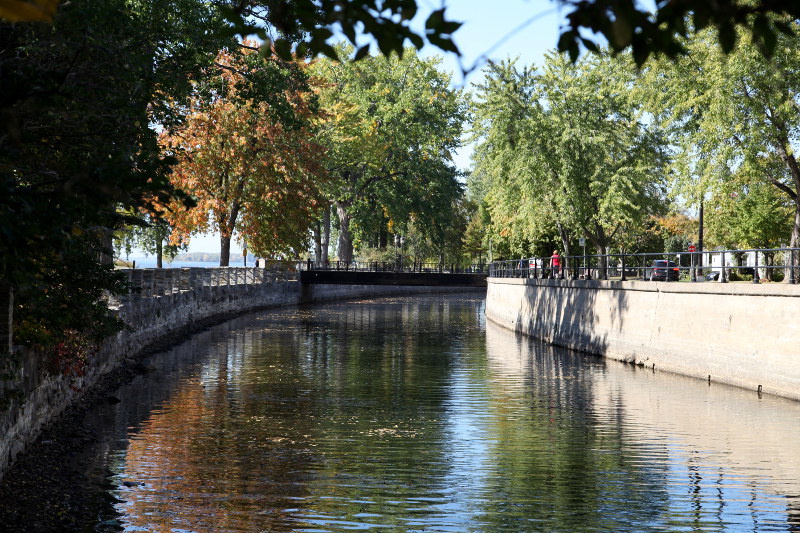Brief History of the Canal
The town of “La Chine” (now known as “Lachine”), was originally home to a set of treacherous rapids that for hundreds and hundreds of years (starting in the 1600s) traders and travellers worked very hard to circumvent.
The means and technology needed to go around these rapids didn’t fully exist until the early 1800s. It was in 1821 that a young Scottish immigrant named John Redpath finally took on the challenge to build a bypass large enough to allow large freight ships to pass safely through to Montréal City (finished 1825).
The impact on Montréal was almost immediate. It opened up the upper St. Lawrence River to travel, turned Montréal into a major trade port, and created one of the largest industrial regions in Canada. New working-class neighbourhoods emerged along the canal and the city’s population grew exponentially.
Over the years, the Canal became a common location for mystery, drama, and violence.
Mysteries of the Canal
There is one person who was given more than his fair share of mysteries by the Lachine Canal: Charles Henry Passmore. For many years (the 1930s & 40s) he was the detective on the Service de police de la Ville de Montréal (SPVM) who worked missing person cases.
Some of his more unusual and mysterious cases have ended up in newspapers from that period. For example, in October 1938, a pair of black shoes were found on the bank of the canal with a suicide note directing officers to a house on Chatham Street. However, when detectives went to the house, no one recognized the shoes.
In a particularly long article in The Montréal Gazette (Nov 2, 1943… not all of it shown), it’s reported that the canal was once the location of suicides during the depression era.
After the depression and during the Second World War, a larger number of missing person cases hit the city. These were attributed to youth disappearing overseas to fight in the war. Perhaps the missing shoe man left to join the war effort.
When asked in the article about his most memorable case, Passmore told a rather funny story about a man who was reported missing by his wife after she was given a suicide note written on a piece of birch bark.
The man had apparently engaged in a battle-to-the-death with a wolf and had lost. He asked a friend named Indian Joe to deliver the message to his wife (even the newspaper eluded to the strangeness of a handwritten note created after his apparent death by a wolf).
When found in Montréal six-months later by detectives and questioned about his death the man simply said, “he had never heard of anyone surviving a battle with a wolf, so everyone ought to take me for dead, even me.”
Another interesting and tragic story outside of the Passmore era comes from the Jul 19, 1984 edition of The Montréal Gazette.
During a canal clean-up by Marcoux Inc (hired by Parks Canada), a car was pulled from the water and in the backseat was the preserved body of a man that had been missing for 4-years. He was still fully dressed and had “the skin of an orange.”
Will we ever be able to skate on the canal?
The city has been talking for decades about converting the canal into a skate way, like the Rideau Canal in Ottawa. But deciding on whether or not to converting the canal is like watching a giant game of whack-a-mole with some people saying “it will happen” and others saying “we can’t afford to make it happen.”
People still do head out to the canal to skate; you just won’t be able to skate the 15-ish kilometres to the core.
